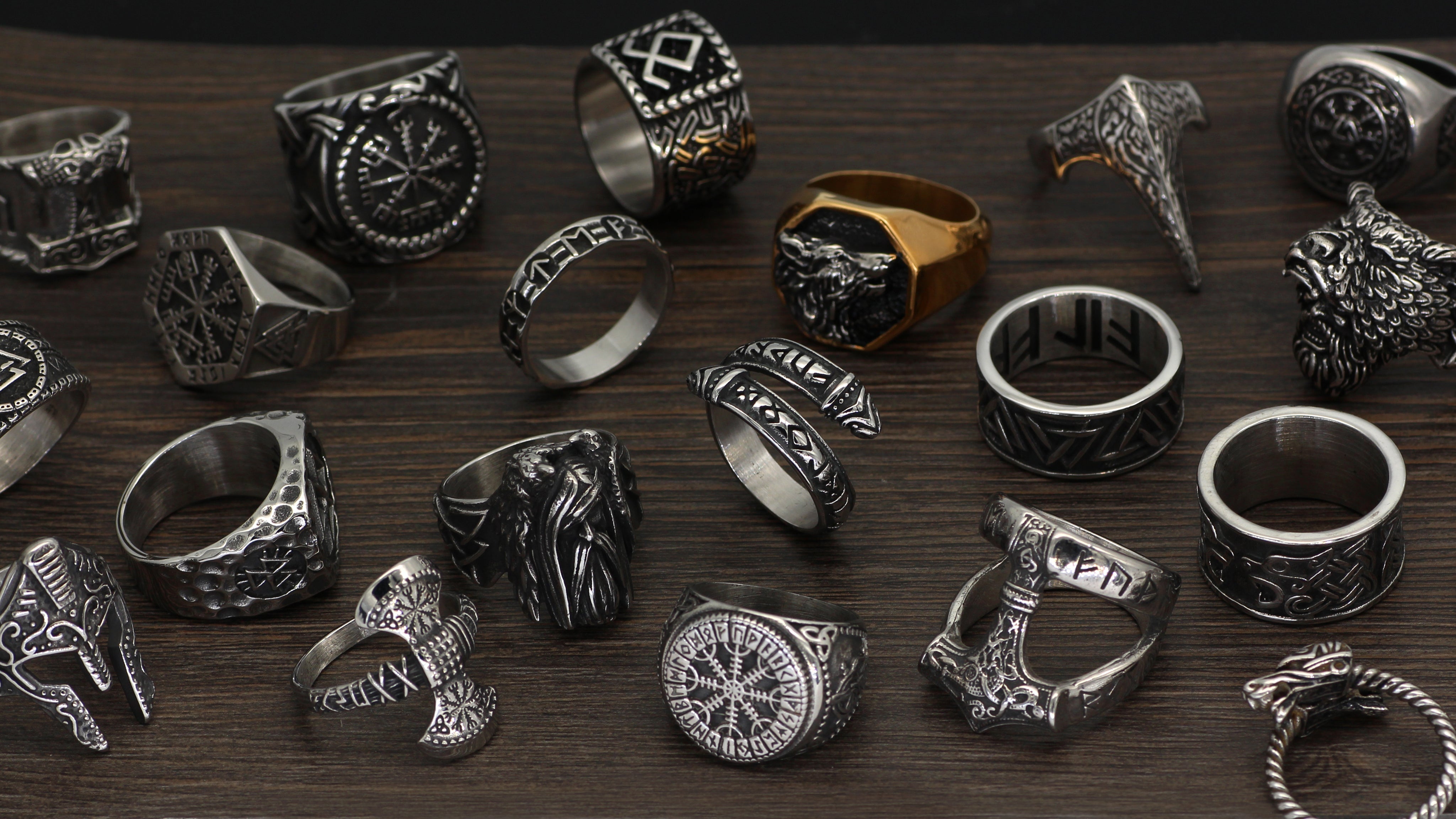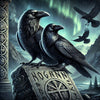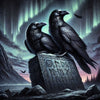The Hidden Meanings in Viking Ring Designs

Echoes of Valhalla: Understanding Viking Ring Symbolism
When you think of Vikings, you probably picture burly warriors and daring explorers. But there's more to these historical figures than meets the eye. Apart from their legendary battles and voyages, the Vikings were pretty amazing artists and craftsmen. Among their coolest creations? Viking rings.
These weren't just flashy accessories; they were loaded with symbols and stories. In this post, we're diving into the world of Viking rings to uncover what all those intricate designs really mean. Spoiler alert: it's not just about looking good in a Viking version of bling!
Section 1: The Role of Rings in Viking Culture
Let's set the scene: you're in the Viking Age, a time when your bling was way more than just a fashion statement. Viking rings were like the Swiss Army knives of jewelry – multi-purpose and meaningful in ways that go beyond mere decoration.
More Than Just Metal:
First off, Viking rings weren't just casual trinkets you'd pick up from a market stall. They were often deeply personal items, sometimes passed down through generations. You might have gotten one as a gift from a chieftain for a job well done, or as a token of loyalty. Basically, these rings were the Viking way of saying, “You're part of the crew.”
Symbols of Status and Power:
The design of a ring could tell you a lot about the person wearing it. A chunky, intricately designed ring? That’s probably a big shot – someone with power or wealth. A simpler band could belong to a common Viking, but it still held its own charm and significance.
More than Gold and Silver:
Sure, Vikings loved their precious metals, but it's not just the material that mattered. The design, the symbols carved into it, and even the way it was worn could say a lot about a person's role in society, their beliefs, or their achievements.
So, when we talk about Viking rings, we're not just talking about a piece of jewelry. We're talking about a piece of history that tells stories of loyalty, status, and the Viking way of life. It's like each ring has its own little saga wrapped around it, waiting to be told. Let's unravel some of these stories in the next sections, shall we?
Section 2: Common Symbols in Viking Rings and Their Meanings
Alright, let’s zoom in on what really sets Viking rings apart – the symbols. These aren't just random designs; they're a language of their own, telling stories and conveying messages that were significant to the Vikings. Understanding these symbols gives us a glimpse into their world, and hey, it's also a cool way to appreciate the artistry behind these ancient accessories.
Runes: The Viking Alphabet of Mystery:
First up, runes. These aren’t just letters; they were believed to hold magical powers. Inscribing a rune into a Viking ring was like embedding a spell or a blessing. For example, the ‘Algiz’ rune symbolized protection – kind of like having a personal bodyguard etched onto your ring.
Animal Totems: Fierce and Mystic:
Vikings were big on nature and mythology, and this is reflected in their rings. Serpents for cunning, wolves for loyalty and strength, dragons for power and wisdom – each animal had its own meaning and added a layer of personality to the ring. Wearing one of these rings was like carrying the spirit of these creatures with you.
Geometric Patterns: More Than Meets the Eye:
The Vikings also used various geometric patterns on their rings. These weren't just for show; they often had symbolic meanings connected to their beliefs and the natural world. Spirals could represent the journey of life, while interlocking patterns might symbolize the interconnectedness of all things.
A Touch of the Divine: Don’t forget the gods and goddesses. Symbols representing deities like Odin, Thor, or Freyja often found their way onto rings, offering a direct connection to the divine. Wearing a ring with Thor’s hammer, for instance, wasn't just cool; it was also a way to invoke the god’s strength and protection.
Every symbol on a Viking ring tells a part of a larger story, a piece of ancient wisdom, or a myth from the rich tapestry of Norse culture. These rings were more than just fancy metal bands; they were miniature storybooks, carrying tales of gods, beasts, and the mystical runes.
Section 3: The Significance of Materials and Craftsmanship in Viking Rings
Now that we’ve talked about the symbols on Viking rings, let's dive into what they were made of and how they were crafted. After all, the material and make of a ring can say as much about its wearer as the designs etched onto it.
Choosing the Right Metal: More Than Just a Shiny Thing:
Vikings didn’t just grab any metal they found lying around. Silver was hugely popular, symbolizing wealth and status. Gold was rarer and thus even more prestigious. But let's not forget about bronze and even iron – less showy, but widely used, especially in the everyday rings of the common Viking. Each material choice tells us something about the era, the available resources, and the social standing of the wearer.
Craftsmanship: The Art Behind the Artifacts:
Crafting these Viking rings was no easy feat. It required skill, patience, and a deep understanding of the materials. The techniques used – from metalworking to engraving – were advanced for their time, showcasing the Vikings’ skill as artisans. The complexity and finesse of a ring’s design could indicate the skill level of its maker and the importance of its intended owner.
Attention to Detail: Where Art Meets Precision:
The level of detail in some of these rings is astounding. Intricate knotwork, delicate carvings of faces or animals, and precise geometric patterns – all these elements required a steady hand and a keen eye. They weren’t just making a ring; they were crafting a piece of art that held cultural and personal significance.
Wear and Tear: The Story of Time:
Many Viking rings we find today show signs of wear, and this in itself tells a story. It speaks to the daily life of the Vikings, how these rings were not locked away in treasure chests but were part of their everyday attire, experiencing the same rough and tumble of Viking life.
Through their materials and craftsmanship, Viking rings connect us to the past in a tangible way. They’re not just relics; they’re remnants of a vibrant culture, telling stories of the people who wore them, the artisans who crafted them, and the society they thrived in.
Section 4: Viking Rings in Rituals and Traditions
We've explored the symbols, materials, and craftsmanship of Viking rings, but their story isn't complete without diving into how these rings fit into the broader tapestry of Viking rituals and traditions. These rings weren't just personal adornments; they played a pivotal role in the social and spiritual life of the Vikings.
Rings in Viking Rituals: More than Just Jewelry:
Viking rings were often central to various rituals. For instance, chiefs and leaders would gift rings to their followers as tokens of loyalty and allegiance – a practice that cemented bonds and affirmed social hierarchies. In some cases, these rings were even used in oath-taking ceremonies, making them powerful symbols of trust and commitment.
Wedding Rings: The Bond of Marriage:
Just like today, rings in Viking times symbolized the bond of marriage. Exchanging rings was a key part of wedding ceremonies, symbolizing the union and commitment between partners. These wedding rings were often specially crafted to reflect the status and clan affiliations of the couple, making them unique and deeply personal.
Funerary Practices: Rings for the Afterlife:
In Viking funerals, it was common to bury the deceased with their personal belongings, including their rings. This practice was rooted in the belief that these items would be useful in the afterlife, reflecting the significance of rings not just in life but in death as well.
Amulets and Protection: Beyond the Physical Realm:
Some Viking rings were believed to have protective powers, serving as amulets. Carved with specific symbols and runes, these rings were thought to offer protection from harm or bad luck, making them a powerful tool in the Viking spiritual arsenal.
By integrating into key aspects of Viking life – from loyalty and marriage to funerary practices and spiritual protection – Viking rings were far more than ornamental. They were integral to the social fabric and spiritual beliefs of the Vikings, bridging the gap between the physical and metaphysical worlds.
Section 5: The Enduring Legacy of Viking Rings in Contemporary Culture
As we've journeyed through the history, symbolism, and craftsmanship of Viking rings, it's clear these ancient treasures are more than just artifacts; they are timeless symbols that continue to inspire and fascinate. But how do these ancient designs resonate in our modern world? Let's explore the lasting impact of Viking rings and their influence on contemporary culture and style.
A Source of Inspiration for Modern Jewelers:
Today, the bold and intricate designs of Viking rings are a wellspring of inspiration for modern jewelers. The unique patterns, mythical symbols, and robust forms are reimagined in contemporary jewelry, appealing to those who appreciate a blend of history, mythology, and artistry. These modern adaptations pay homage to the Viking legacy while catering to current fashion trends.
Viking Rings in Popular Media:
The allure of Viking culture, especially as portrayed in movies, TV shows, and literature, has brought Viking rings back into the spotlight. These depictions often spark renewed interest in Viking-style jewelry, with fans seeking out rings that capture the essence of their favorite characters or stories.
Symbolism for the Modern Seeker:
The ancient symbols on Viking rings still hold significant meaning for many today. Whether it's for their supposed magical properties, spiritual significance, or simply as a connection to Viking heritage, people are drawn to these symbols, finding personal meaning in the age-old designs.
Collecting and Preserving History: For history buffs and collectors, acquiring authentic Viking rings is a way to preserve and connect with the past. These rings are treasured not just for their beauty, but for the stories they carry and the historical insights they provide.
Viking Rings in Fashion: Beyond their historical and cultural significance, Viking rings have also carved out a niche in the world of fashion accessories. Their distinctive style offers an edgy, timeless appeal, easily blending with various fashion styles, from the bohemian to the avant-garde.
Conclusion: The Timeless Allure of Viking Rings
As we wrap up our exploration into the fascinating world of Viking rings, it's clear that these ancient treasures are more than just remnants of a bygone era. They are enduring symbols of a rich and complex culture that continues to intrigue and inspire us today. From their deep symbolic meanings and exquisite craftsmanship to their significant roles in Viking rituals and traditions, Viking rings offer us a unique window into the lives and beliefs of the Vikings.
In today's world, where the past often feels disconnected from the present, Viking rings serve as a tangible link to our ancestors. They remind us of the universality of human expression through art and jewelry, transcending time and cultural boundaries. The continued interest in and admiration for Viking rings, whether by historians, jewelers, collectors, or fashion enthusiasts, is a testament to their lasting impact and appeal.
Viking rings are not just artifacts to be studied; they are stories to be told, treasures to be cherished, and a legacy to be continued. They remind us that even in the smallest of objects, there's a world of history waiting to be explored.







